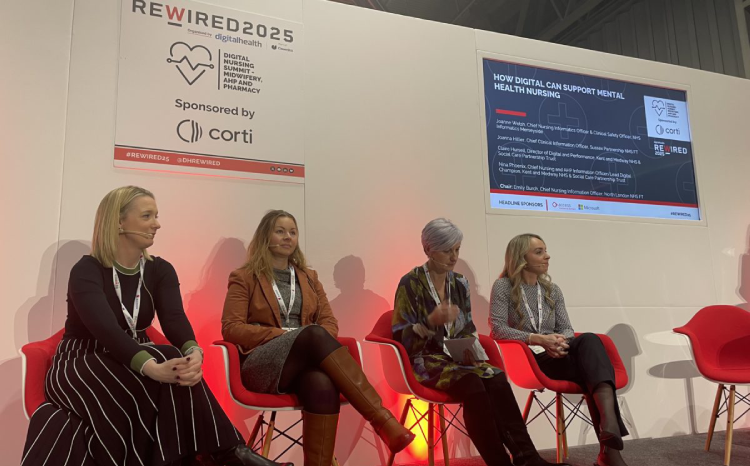Blended care: a remedy for mental health provision
- 27 July 2018

When mental health patient James (real name changed) struggled to form positive relations and suffered from depression as a result, Internet-based therapy, which could compound his loneliness, seemed the least likely option. Jaime Essed reports.
The NHS has been pushing patients towards webcam and instant messaging (IM) appointments to ease pressure and waiting times, as a ‘potent mix’ of rising demand and cuts to the workforce provides a real challenge for NHS mental health services in England and Wales.
NHS Providers found that 80% of bosses of NHS trusts in England fear they cannot provide timely, high-quality care to the growing numbers of people seeking mental health support. It is no surprise, then, that the NHS is increasingly looking eHealth as an alternative solution.
However, since clinicians often have a minimal or no role in stand-alone eHealth initiatives, they stay in doubt about their usability and clinical effectiveness. That doesn’t mean that eHealth has no role to play in mental health care provision – but content developers, clinicians, service users and IT providers should explore other, more efficient solutions that benefit patients in the long-term.
The limitations of eHealth
Currently, the number of evidence-based eHealth interventions is limited. As such, care providers remain sceptical that eHealth can significantly reduce waiting time pressures and improve the quality of life for their patients and their relatives.
In addition, most eHealth interventions are highly standardised and can’t be easily adapted to meet the personal needs of each service user. This stands in sharp contrast with face-to-face sessions, where clinicians can make adjustments on the spot or after having consulted their colleagues. Just like any other clinical trajectory, eHealth should leave plenty of room for clinicians to share expertise at every point during the treatment programme.
The success factors of blended care
These shortcomings can be met with a blended care format that embraces eHealth while keeping clinicians firmly in the driving seat. Blended care acts as a bridge between traditional face-to-face healthcare provision and eHealth solutions. For this to be an effective and acceptable treatment method, it needs to meet three key requirements.
Firstly, face-to-face and digital solutions should complement each other qualitatively in a way standalone webcam or IM-based initiatives are unlikely to achieve. Clinicians are able to maximise face-to-face sessions as necessary for high-quality therapy, and consider digital alternatives for vital but lower-level treatment.
Secondly, blended care should reflect the specific needs of the service user and the flexible input of clinical expertise. Our earlier example showed James, for whom internet-based therapy seemed an unlikely option. And yet, his therapist realised that such an approach enabled him to make a positive connection with her because they were physically in different locations. In fact, it fostered a sense of security that was needed before he was able to participate in deeper face-to-face sessions.
Thirdly, blended care should be time and cost-saving. Considering that there are shortages of specialist nurses and psychiatrists, clinicians simply lack the time to carry out all therapy sessions face-to-face. Since the delivery of digital solutions as part of a blended care approach isn’t limited to a particular geographic location, blended care allows them to carry out some part of the treatment programme at a time and location that is convenient to both parties, saving travelling time and money.
The benefits to clinicians and patients
Waiting times can be reduced by starting treatment before the first face-to-face session. Patients can complete preparation work online, for example a diary for tracking behaviours, emotions or cognitions. It can give the service user a sense of control from the outset and accelerate the diagnosis and treatment planning process. Equally, clinicians can make other digital support tools available once face-to-face sessions have ended, allowing service users to continue building on their progress.
Traditional therapy focuses almost solely on the individual, though a mental health patient rarely exists in isolation: there will be close friends and family who wish to support but lack the knowledge and tools, or the facilities to join the patient in face-to-face sessions. A blended care approach gives the person’s support network more opportunities to provide effective help. eHealth modules specifically aimed at them could help with psycho-education for a better understanding of the condition. In addition to supporting their loved ones, bringing informal carers into the reach of the healthcare system will inevitably save the NHS time and money further down the line.
Adding eHealth components that target secondary health-related problems can optimise treatment services. A quarter of people with mental health problems are also in problem debt. Mental health conditions can cause financially reckless behaviour, whereas financial problems can in turn exacerbate mental health problems. Ignoring debt worries is akin to putting a plaster on a wooden leg – it simply doesn’t work.
In this particular example of secondary problems, eHealth modules can include advice on how to address and solve money problems, for instance by connecting them to a debt counsellor. More importantly from a clinical perspective, eHealth modules can also be applied to help the patient understand the psychodynamics behind their pattern of dysfunctional behaviours, teach them how to recognise emotions that can trigger these behaviours and how to prevent them in future.
For James, eHealth modules eventually lost their original function as an enabler of sharing his emotions. However, he continued using them for other purposes, such as building his social assertiveness. His therapist gained valuable experience from working with a patient on a flexible care format that delivered qualitatively responsible therapy.
Blended care is a highly dynamic and flexible care format. It is not just about adding eHealth components to support face-to-face sessions in order to ease pressure on clinicians and waiting times. When done right, blended care can accelerate and deepen face-to-face therapy improving overall health outcomes for patients and the NHS alike.
By Jaime Essed, founder of mental health interventions provider Oh My Mood, which creates pathways in which face-to-face mental health therapies are supported by digital solutions.





1 Comments
Considering that there are shortages of specialist nurses and psychiatrists, clinicians simply lack the time to carry out all therapy sessions face-to-face.
Ever thought abut the role and contributions of Clinical Psychologists or the IAPT resources in all this?
Comments are closed.